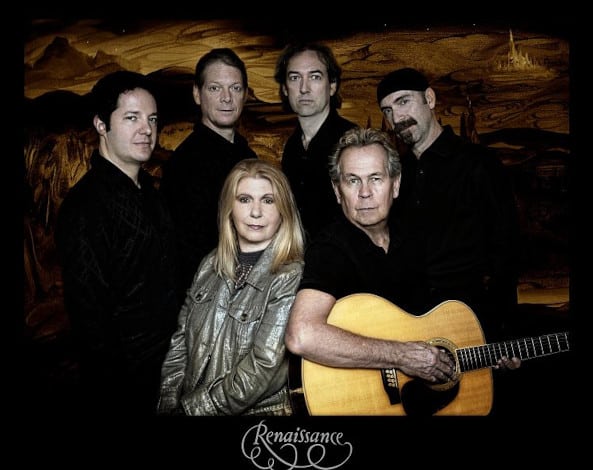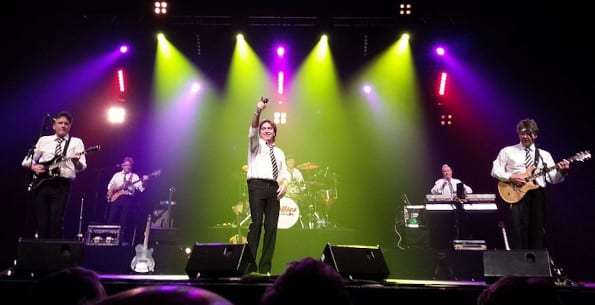Table of Contents
Change is inherent in the music industry. Over time, many bands undergo lineup shifts, sometimes to the extent that none of the original members remain. Such transformations can be due to various reasons, from personal differences to artistic directions.
This Killer Rig article looks into the histories of 15 iconic bands with no original members. The evolution of these bands provides a unique perspective on the dynamics of the music world and the resilience of artistry.
Sepultura
Founded in Belo Horizonte, Brazil, in 1984, Sepultura started as a collaboration between two brothers, Max and Igor Cavalera. The band’s name, which means “grave” in Portuguese, hinted at the heavy and intense sound they aimed to produce.
Initially heavily influenced by death metal, their sound gradually grew to include thrash, hardcore punk, and even traditional Brazilian drumming.
However, like many bands, Sepultura wasn’t immune to internal conflicts. In 1996, frontman Max Cavalera departed, leading to significant changes in the band’s lineup and sound.
Despite the challenges, the band persisted, with Derrick Green taking over vocal duties. Under Green’s leadership, Sepultura ventured into new musical territories, incorporating more diverse influences into their sound.
The subsequent years saw more changes, with none of the original members remaining in the band today.
Despite this, Sepultura continues to be a force in the metal world, releasing albums and touring extensively. Their journey, marked by evolution and resilience, stands as a testament to the enduring spirit of music.
GWAR
Emerging from the depths of outer space (or, more accurately, Richmond, Virginia) in 1984, GWAR is not just a band, it’s a spectacle. Known for their elaborate science fiction-themed mythology, outrageous costumes, and graphic stage performances, GWAR is an interesting blend of music, art, and theater.
GWAR’s concerts have become legendary for their over-the-top antics, including spraying the audience with various fluids and enacting violent, comedic sketches.
However, the band’s journey hasn’t been without turbulence. GWAR has seen numerous member changes. The most significant was the untimely passing of their lead vocalist and founding member, Dave Brockie (Oderus Urungus), in 2014.
Despite such setbacks, the band has soldiered on, with Michael Bishop (Blothar) taking over lead vocal duties.
Today, none of the original members remain, but GWAR’s legacy is far from over. The band continues to tour, record, and, most importantly, entertain, proving that their brand of chaotic, comedic metal is truly timeless.
Blood, Sweat & Tears
A musical experiment started in New York City in the late 1960s. Al Kooper, a former member of the Blues Project and a session musician for Bob Dylan, aimed to create an original sound by merging jazz, rock, and classical segments. Blood, Sweat & Tears is the result of this experiment.
Their self-titled second album, released in 1968, was a testament to their innovative approach. However, after their first album, “Child Is Father to the Man,” Kooper left due to creative differences.
The band underwent significant lineup alterations, with David Clayton-Thomas taking over as the lead vocalist.
Over the years, members came and went, each bringing their personal flavor to the band’s sound. Despite the changes, the essence of Blood, Sweat & Tears remained intact: a commitment to musical excellence and innovation.
Currently, there are no original members left in the lineup. Yet, the band continues to perform and introducing new generations to their groundbreaking fusion of genres. Their legacy serves as a reminder of the boundless possibilities that arise when musicians dare to think outside the box.
Renaissance

Keith Relf and Jim McCarty had the idea for Renaissance, which sprang from the ashes of The Yardbirds in the late 1960s. They had in mind a combination of rock, folk, and classical music.
As the band evolved, Annie Haslam’s ethereal voice became its signature, enchanting listeners with tracks like “Northern Lights” and “Mother Russia.” Yet, the band’s lineup was as fluid as its music, undergoing numerous changes.
Despite the absence of any original members today, Renaissance’s legacy remains undiminished, a testament to the timeless appeal of their unique sound.
Little River Band
Little River Band, an Australian group from Melbourne, first appeared on the world music scene in the middle of the 1970s. They scored a number of singles, including “Reminiscing” and “Cool Change,” with their well-balanced rock and pop sound.
However, the band’s line-up was constantly changing in the background. Members joined and left the group, resulting in an entirely different group by the early 1980s.
Remarkably, today’s Little River Band doesn’t feature any of its founding members, yet the essence of their music, a fusion of memorable hooks and smooth harmonies, continues to resonate with fans worldwide.
Blackfoot
Originating as “Fresh Garbage” and later named “Hammer,” Blackfoot eventually settled on its iconic name and began its journey in the world of Southern rock.
With tracks that packed a punch and resonated with fans, they quickly made a name for themselves. However, the band’s lineup was never static.
Rickey Medlocke, one of the co-founders, saw the band through its many evolutions, but even he took breaks, pursuing other musical ventures.
Blackfoot’s lineup has no members from its early days, but their sound, a blend of rock with a Southern twist, remains a favorite for many.
Thin Lizzy
Thin Lizzy, founded in Dublin in 1969, quickly became synonymous with hits like “The Boys Are Back in Town” and “Whiskey in the Jar.” Their twin lead guitar sound and Phil Lynott’s distinctive voice set them apart in the rock scene.
However, beneath the spotlight, the band experienced its share of challenges. Lynott’s untimely death in 1986 marked a significant turning point.
Members rotated in and out, with Scott Gorham being a mainstay for many of those years. While the band’s lineup has completely changed, Thin Lizzy’s legacy of rock anthems and powerful performances endures.
Quiet Riot
Quiet Riot, who began their career in the late 1970s, gained popularity for their heavy metal style, particularly with songs like “Cum On Feel the Noize.” They became well-known in the rock scene after their album “Metal Health” shot to the top of the charts.
But success came with its challenges. The band faced numerous lineup changes, most notably with the passing of their charismatic lead singer, Kevin DuBrow, in 2007.
Through the ups and downs, Quiet Riot persisted. Now, with a lineup that doesn’t include any of its original members, the band continues to rock stages worldwide, keeping the spirit of their early days alive.
Canned Heat
Formed in 1965, Canned Heat quickly established themselves as a force in the blues-rock world. Their distinctive sound, evident in tracks like “Going Up The Country” and “On The Road Again,” drew from both traditional blues and modern rock influences.
However, stability was not a hallmark for the band. Throughout the years, members frequently came and went, leading to a constantly evolving lineup.
Drummer Adolfo “Fito” de la Parra, who joined in 1967, became a central figure, though he wasn’t part of the original ensemble. Today, while none of the founding members remain, Canned Heat’s influence in the world of blues-rock is undeniable.
The Hollies

Emerging in the early 1960s, The Hollies became one of the leading British groups of the era. With hits like “He Ain’t Heavy, He’s My Brother” and “Long Cool Woman in a Black Dress,” their pop-rock sound and tight harmonies earned them a dedicated fanbase.
Founded by Graham Nash and Allan Clarke, the band’s lineup saw changes as the years rolled on. Nash eventually left to form Crosby, Stills & Nash, and other members also pursued different paths.
The Hollies, however, continued to produce music and tour. Even without any of its original members, the band’s legacy of catchy tunes and memorable performances remains strong.
Ratt
In the 1980s, the glam metal scene was ablaze, and Ratt was right at the forefront. With their edgy look and catchy tracks like “Round and Round,” they quickly climbed the charts and became a staple in the metal community.
Founded by vocalist Stephen Pearcy, guitarists Robbin Crosby and Warren DeMartini, bassist Juan Croucier, and drummer Bobby Blotzer, the band’s chemistry was electric.
However, as time went on, internal conflicts and external pressures led to lineup shifts. Crosby’s tragic passing in 2002 was a significant blow.
Even though Ratt’s lineup has changed, its impact on the glam metal scene is still felt, and their music continues to be loved by both longtime and new fans.
Heart
Heart, a group from the Pacific Northwest, became known for its hard rock and folk intermingling with songs like “Barracuda” and “Crazy On You.”
The band’s trademark sound didn’t fully develop until the addition of sisters Ann and Nancy Wilson in the early 1970s. But this was after the group had already been formed in the late 1960s. Their powerful vocals and dynamic performances set them apart in a male-dominated rock scene.
However, Heart wasn’t without its challenges. Over the decades, the band underwent many member changes, with the Wilson sisters being the consistent core.
While today’s Heart doesn’t feature any of its earliest members, the band’s impact on rock music, especially as trailblazers for women in the genre, is undeniable.
Iron Butterfly
Iron Butterfly was a significant figure in the psychedelic rock movement that emerged in the late 1960s. The group stood out thanks to its heavy sound and intriguing rhythms, which are most remembered for their epic song “In-A-Gadda-Da-Vida.”
Originating in San Diego, Iron Butterfly underwent several changes even before their most famous track was released. By their second album, they had already seen significant shifts in their roster.
Drummer Ron Bushy, while not an original member, became a central figure in the band’s history. Over the years, members came and went, but the essence of Iron Butterfly’s music remained.
With none of its founding members, the band’s legacy in the world of psychedelic rock is firmly cemented.
Humble Pie
In the realm of rock supergroups, Humble Pie carved out a special niche. Formed in the late 1960s, the band brought together talents like Steve Marriott from The Small Faces and Peter Frampton from The Herd.
Their sound was a powerful mix of hard rock and blues, producing classics like “30 Days in the Hole” and “I Don’t Need No Doctor.” As with many supergroups, the lineup was dynamic.
Members pursued solo careers, leading to changes in the band’s composition. Frampton’s departure in the early ’70s was particularly notable, though the band continued to produce music and tour.
While Humble Pie’s original lineup is a thing of the past, their influence on rock music endures.
Yes
Progressive rock found one of its champions in the band Yes. Formed in 1968, their intricate compositions, blending rock with classical and jazz elements, set them apart.
Tracks like “Roundabout” and “Owner of a Lonely Heart” showcased their musical prowess and innovation. The band’s lineup, however, was anything but static.
Founding members Jon Anderson, Chris Squire, Peter Banks, Tony Kaye, and Bill Bruford saw the band through its early days, but as the years progressed, the lineup frequently shifted.
Anderson’s distinctive vocals became synonymous with the Yes sound, but even he had periods of departure and return.
Today, while the band has two lineups touring and none of the original members in one of them, Yes’s contribution to the world of progressive rock remains unparalleled.

